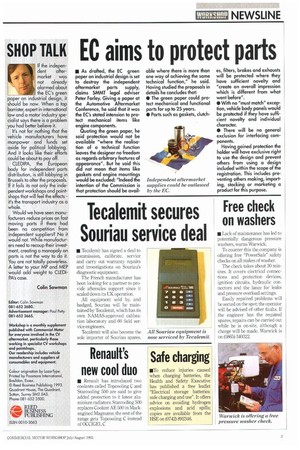• As drafted, the EC green paper on industrial design
Page 75

If you've noticed an error in this article please click here to report it so we can fix it.
is set to destroy the independent aftermarket parts supply, claims SMMT legal adviser Peter Farley. Giving a paper at the Automotive Aftermarket Conference, he said that it was the EC's stated intension to protect mechanical items like engine components.
Quoting the green paper, he said protection would not be available "where the realisation of a technical function leaves the designer no freedom as regards arbitrary features of appearance". But he said this did not mean that items like gaskets and engine mountings would be excluded: "Indeed the intention of the Commission is that protection should be avail able where there is more than one way of achieving the same technical function," he said, Having studied the proposals in details he concludes that: • The green paper could protect mechanical and functional parts for up to 25 years. • Parts such as gaskets, clutch es, filters, brakes and exhausts will be protected where they have sufficient novelty and "create an overall impression which is different from what went before".
• With no "must match" exception, vehicle body panels would be protected if they have sufficient novelty and individual character.
• There will be no general exclusion for interfacing components. Having gained protection the holder will have exclusive right to use the design and prevent others from using a design included within the scope of the registration. This includes preventing others making, importing, stocking or marketing a product for this purpose.
































































































